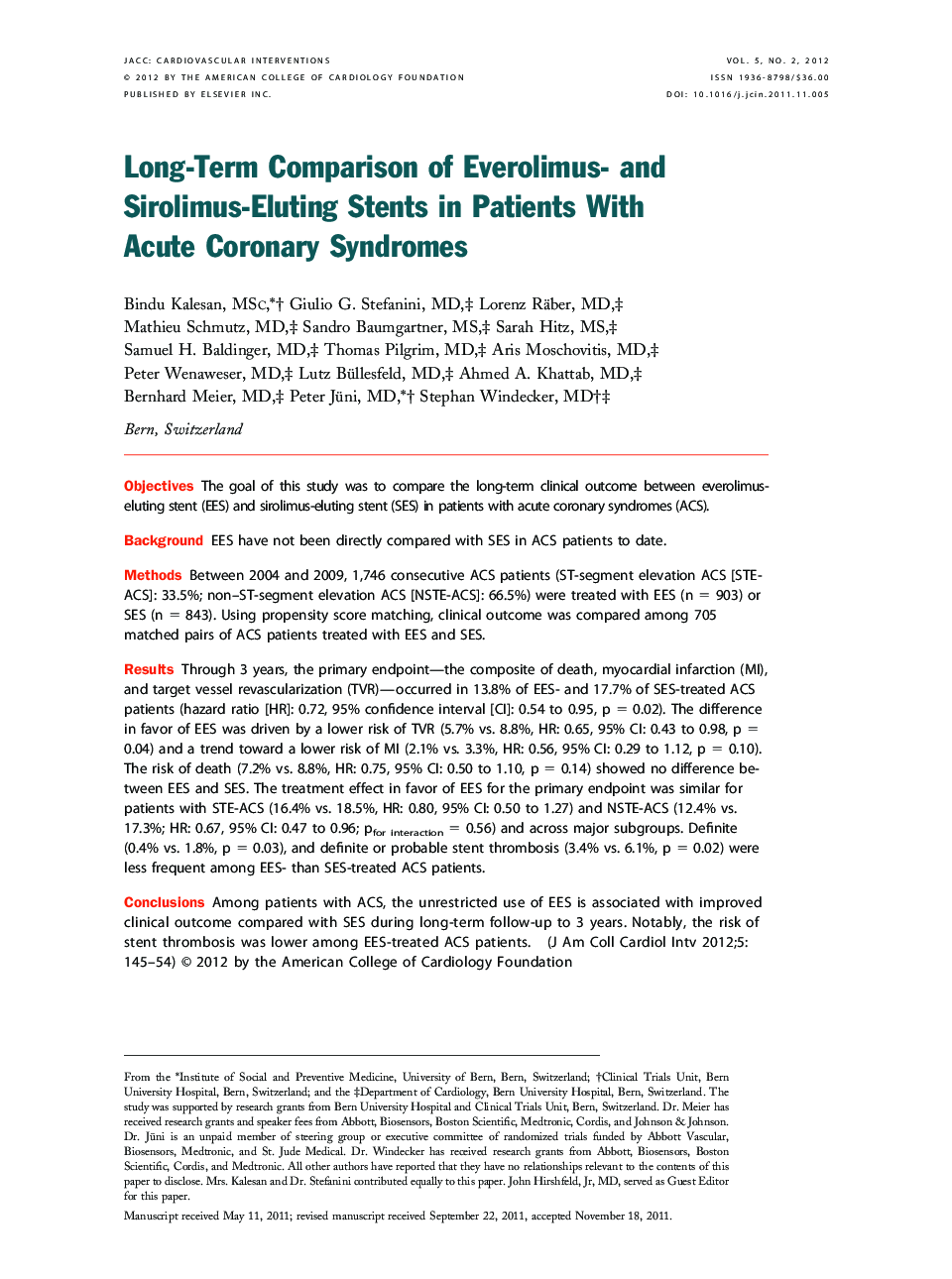| کد مقاله | کد نشریه | سال انتشار | مقاله انگلیسی | نسخه تمام متن |
|---|---|---|---|---|
| 2941690 | 1177082 | 2012 | 10 صفحه PDF | دانلود رایگان |

ObjectivesThe goal of this study was to compare the long-term clinical outcome between everolimus-eluting stent (EES) and sirolimus-eluting stent (SES) in patients with acute coronary syndromes (ACS).BackgroundEES have not been directly compared with SES in ACS patients to date.MethodsBetween 2004 and 2009, 1,746 consecutive ACS patients (ST-segment elevation ACS [STE-ACS]: 33.5%; non–ST-segment elevation ACS [NSTE-ACS]: 66.5%) were treated with EES (n = 903) or SES (n = 843). Using propensity score matching, clinical outcome was compared among 705 matched pairs of ACS patients treated with EES and SES.ResultsThrough 3 years, the primary endpoint—the composite of death, myocardial infarction (MI), and target vessel revascularization (TVR)—occurred in 13.8% of EES- and 17.7% of SES-treated ACS patients (hazard ratio [HR]: 0.72, 95% confidence interval [CI]: 0.54 to 0.95, p = 0.02). The difference in favor of EES was driven by a lower risk of TVR (5.7% vs. 8.8%, HR: 0.65, 95% CI: 0.43 to 0.98, p = 0.04) and a trend toward a lower risk of MI (2.1% vs. 3.3%, HR: 0.56, 95% CI: 0.29 to 1.12, p = 0.10). The risk of death (7.2% vs. 8.8%, HR: 0.75, 95% CI: 0.50 to 1.10, p = 0.14) showed no difference between EES and SES. The treatment effect in favor of EES for the primary endpoint was similar for patients with STE-ACS (16.4% vs. 18.5%, HR: 0.80, 95% CI: 0.50 to 1.27) and NSTE-ACS (12.4% vs. 17.3%; HR: 0.67, 95% CI: 0.47 to 0.96; pfor interaction = 0.56) and across major subgroups. Definite (0.4% vs. 1.8%, p = 0.03), and definite or probable stent thrombosis (3.4% vs. 6.1%, p = 0.02) were less frequent among EES- than SES-treated ACS patients.ConclusionsAmong patients with ACS, the unrestricted use of EES is associated with improved clinical outcome compared with SES during long-term follow-up to 3 years. Notably, the risk of stent thrombosis was lower among EES-treated ACS patients.
Journal: JACC: Cardiovascular Interventions - Volume 5, Issue 2, February 2012, Pages 145–154